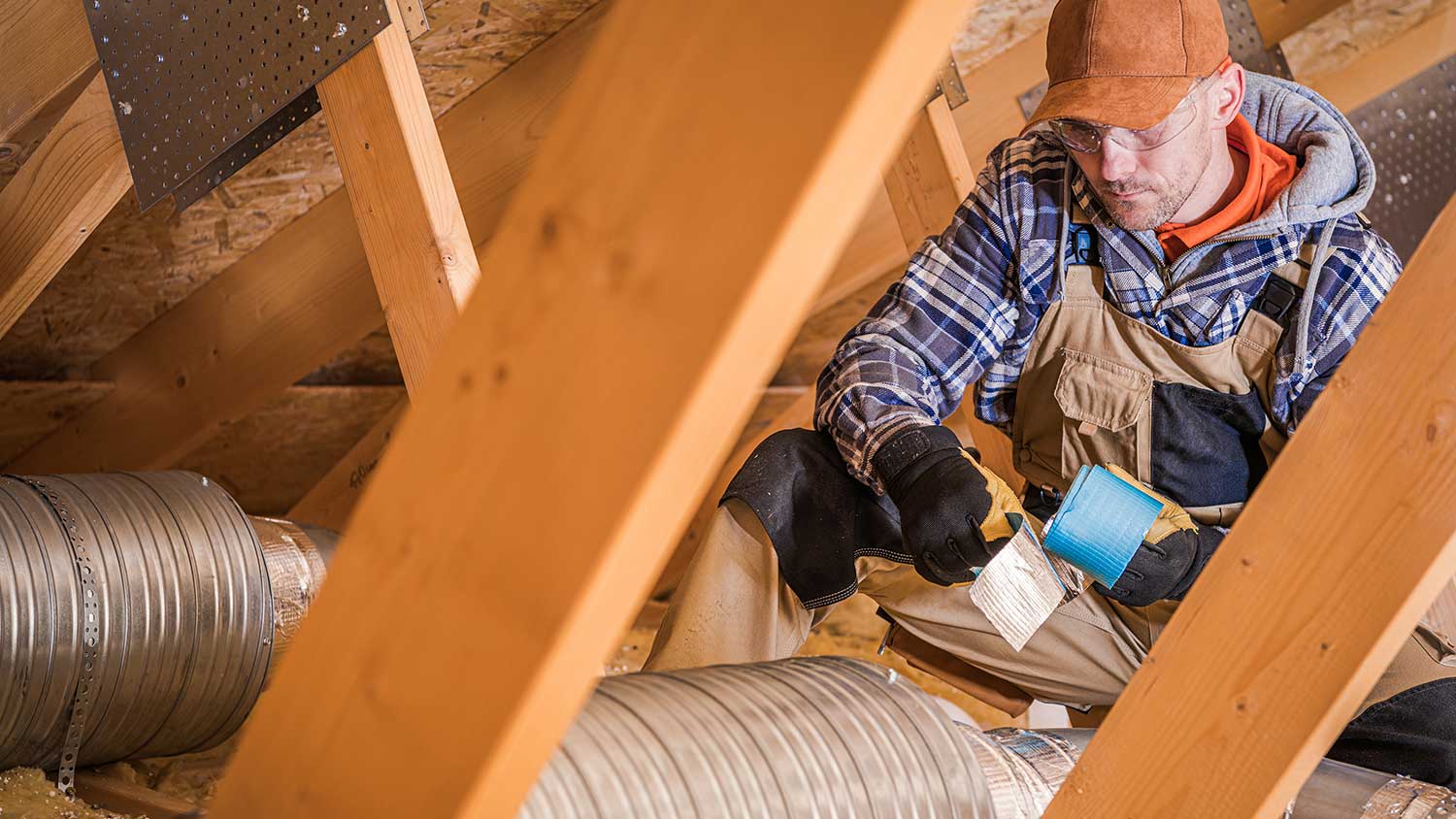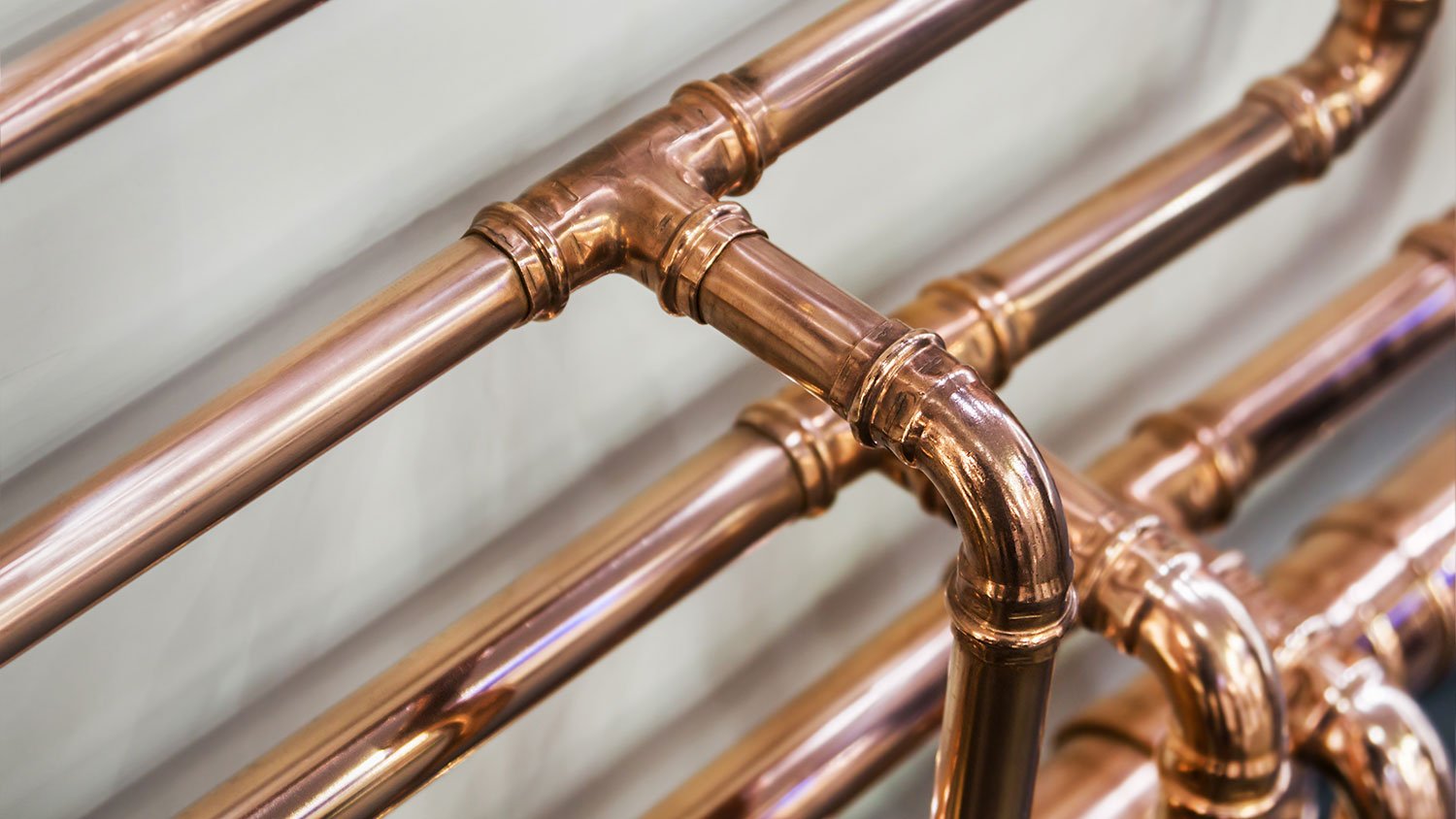
This guide to toilet installation cost covers what you can expect to pay when adding a new toilet to an existing or new bathroom.
It’s time to spread the word about VOCs


From that new vinyl flooring to those plastic shower curtains, you’ve probably sniffed that familiar, synthetic smell of a PVC product. While these products are inarguably cheaper than wood, metal, and other types of materials, that vinyl smell could actually be detrimental to the indoor air quality in your home. Here’s what you need to know about PVC outgassing.
Polyvinyl chloride (PVC), also called vinyl, is a synthetic, thermoplastic material used extensively in building and construction materials, remodeling projects, HVAC systems, cosmetics, home goods, and the medical industry.
Thermoplastic means PVC is heated and then cooled into the desired shape. The end product is solid and white (though some products have color added to them). PVC products are lightweight, easy to process, and are cost-effective. It’s no wonder these products are replacing older types of building materials, such as traditional hardwood flooring, wood structures, pipes, and even concrete.
Here are a few common places you may find PVC in your home:
Heating and cooling: If you have a high-efficiency furnace, or plan to install one, chances are that your heating and cooling contractor will use PVC piping on the furnace's fresh air intake and exhaust ports.
Flooring: This includes some vinyl flooring and carpeting.
Building materials: Roofing, doors, windows, trim, and wire insulation all might contain PVC materials.
While PVC has taken the building and construction industry by storm, this material may pose health problems. The abundant use of PVC, especially in heating and cooling applications, has given rise to a new environmental concern called "outgassing." Over time, PVC releases volatile organic compounds (VOCs) into the air.
The Environmental Protection Agency (EPA) states that VOCs are a potential cause of health problems ranging from eye, nose, and throat irritations to nausea, fatigue, dizziness, and memory impairments, among others. Long-term exposure to low levels of VOCs in water and air are linked to permanent neurological, liver, and kidney damage and may play a role in reproductive disorders.
Even with these risk factors, however, PVC products aren’t regulated by the EPA. In fact, the Center for Biological Diversity recently sued the EPA for its lack of regulation on PVC products in the hopes of categorizing PVC as hazardous waste—a move that our Canadian neighbors made at the beginning of 2021.
At room temperatures, PVCs are stable, but the chemicals used to manufacture PVC products have a low boiling point. When heated, the release of VOCs into the air increases significantly. This is because the very same method of melting thermoplastic polymers into set shapes leaves the end products equally susceptible to heat.
PVC furnace exhaust ports, hot water plumbing systems, house fires, and sun exposure can deteriorate PVC, leading to the release of VOCs.
Identifying products containing PVC can be tricky. They can look very convincing as alternatives to traditional building materials, so it’s challenging to know which products pose a potential health risk.
There are two ways to identify indoor air pollutants: DIYing it or hiring a pro to conduct an indoor air quality assessment.
While you can check labels and identify potential PVC products on your own, this can take a long time if you’re not sure which products were made from PVC materials.
A faster but more costly route is to speak to home builders in your area, remodeling contractors, and plumbers for recommendations on which products in your home might contain PVC.
If you don’t have any upcoming building or remodeling plans, it might not be feasible for you to contact local professionals one-by-one for recommendations. In this case, consider hiring a professional to conduct an indoor air quality test. Air quality tests cost around $400 and can help you figure out what needs replacing in your home.
Let’s say your air quality test shows high levels of pollutants in the house. If you’re concerned about the PVC products in your home and want to replace them, you’ll need to find alternatives to PVC.
Here are five alternatives to common PVC products:

For PVC in residential heating and cooling, you can swap it out with stainless steel intake and exhaust ports and other forms of piping and ductwork. But keep in mind that more durable products like steel and aluminum will end up costing you significantly more than PVC.
According to HomeAdvisor, polyester material costs $1 to $4 per linear foot, while aluminum costs between $2 and $5 and galvanized steel costs between $3 and $10 per linear foot.

PVC is used extensively in plumbing applications and can leach lead, cadmium, and chemicals like phthalates into freshwater systems. Consider switching to copper, galvanized steel, or cast-iron plumbing as an alternative to PVC if you’re concerned about the potentially harmful effects of outgassing in your home’s water systems.
Vinyl flooring is an affordable and customizable option for many homeowners, but if you’re hoping to avoid outgassing, you’ll want to avoid covering your floors with this material. Instead, opt for traditional wood flooring, tile, bamboo, or even cement for a durable floor in your home. If you choose engineered hardwood flooring, make sure it doesn’t contain VOCs.
Keep in mind that the cost of new floors will vary depending on which option you choose. Vinyl floors cost around $3 to $7 per square foot, while ceramic, stone, porcelain tile, and hardwood floors cost between $6 and $22 on average.
Since PVC doesn’t rot, you’ll find that it’s in numerous building supplies as a cheaper alternative to wood. There are PVC options for corrugated roof panels, decking, and trim boards for walls, windows, and doors, so look closely at these areas of your home if you’re conducting a DIY inspection for vinyl products.
Though wood is more likely to rot and requires more maintenance to upkeep, it’s often the go-to material for traditional decking and trim around the home (not to mention, it’s far easier to paint than PVC). For corrugated roof panels that use PVC for gazebos, patios, and garages, consider swapping those out for metal panels.
From your shower curtains to your furniture and trash cans, PVC can hide just about anywhere. One way that you can replace your PVC household items is to choose PEVA (polyethylene vinyl acetate) materials instead. PEVA is considered a safer alternative to PVC. PEVA is easy to clean, durable, and doesn’t contain PVCs or other kinds of outgassing materials.
From average costs to expert advice, get all the answers you need to get your job done.

This guide to toilet installation cost covers what you can expect to pay when adding a new toilet to an existing or new bathroom.

Under the sink, behind the tub, or through the walls—pipe replacement costs for small projects run the gamut. Here's what to know.

Repairing a main water line is an urgent matter, so use this guide to get an idea of how much main water line repairs cost to act fast.

Not sure who to hire for undermount sink repair? Countertop specialists are the best place to start, but plumbers may also be helpful.

If your tub stopper is ruining bathtime or it’s time for a new one, you can easily DIY the job. Keep reading to discover how to remove a bathtub drain stopper.

We’ll show you how to keep pipes from freezing in the winter and how to thaw yours before they burst.